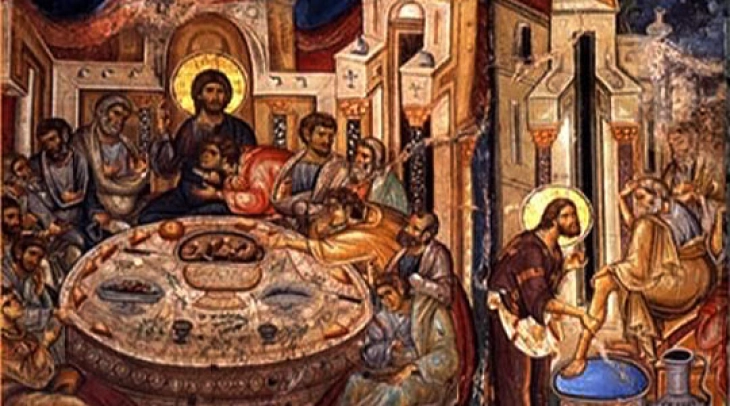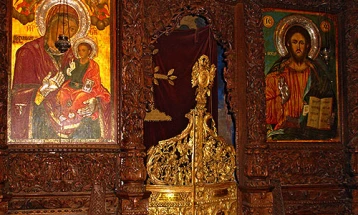Religious calendars
- Macedonian Orthodox Church Calendar; Dionysius the Pseudo-Areopagite

16 October 2024 (MIA)
Macedonian Orthodox Church Calendar
Dionysius the Pseudo-Areopagite
By “Dionysius the Areopagite” is usually understood the judge of the Areopagus who, as related in Acts, xvii, 34, was converted to Christianity by the preaching of St. Paul, and according to Dionysius of Corinth (Eusebius, Hist. Eccl., III, iv) was Bishop of Athens. In the course of time, however, two errors of far-reaching import arose in connection with this name. In the first place, a series of famous writings of a rather peculiar nature was ascribed to the Areopagite and, secondly, he was popularly identified with the holy martyr of Gaul, Dionysius, the first Bishop of Paris. It is not our purpose to take up directly the latter point; we shall concern ourselves here (1) with the person of the Peudo-Areopagite; (2) with the classification, contents, and characteristics of his writing; (3) with their history and transmission; under this head the question as to the genuineness of, origin, first acceptance, and gradual spread of these writings will be answered.
Catholic Calendar
St. Margaret Mary Alacoque
Religious of the Visitation Order. Apostle of the Devotion to the Sacred Heart of Jesus, born at Lhautecour, France, 22 July, 1647; died at Paray-le-Monial, 17 October, 1690. Her parents, Claude Alacoque and Philiberte Lamyn, were distinguished less for temporal possessions than for their virtue, which gave them an honourable position. From early childhood Margaret showed intense love for the Blessed Sacrament, and preferred silence and prayer to childish amusements. After her first communion at the age of nine, she practised in secret severe corporal mortifications, until paralysis confined her to bed for four years. At the end of this period, having made a vow to the Blessed Virgin to consecrate herself to religious life, she was instantly restored to perfect health. The death of her father and the injustice of a relative plunged the family in poverty and humiliation, after which more than ever Margaret found consolation in the Blessed Sacrament, and Christ made her sensible of His presence and protection. He usually appeared to her as the Crucified or the Ecce Homo, and this did not surprise her, as she thought others had the same Divine assistance. When Margaret was seventeen, the family property was recovered, and her mother besought her to establish herself in the world. Her filial tenderness made her believe that the vow of childhood was not binding, and that she could serve God at home by penance and charity to the poor. Then, still bleeding from her self-imposed austerities, she began to take part in the pleasures of the world. One night upon her return from a ball, she had a vision of Christ as He was during the scourging, reproaching her for infidelity after He had given her so many proofs of His love. During her entire life Margaret mourned over two faults committed at this time–the wearing of some superfluous ornaments and a mask at the carnival to please her brothers. All her actions, her revelations, her spiritual maxims, her teachings regarding the devotion to the Sacred Heart, of which she was the chief exponent as well as the apostle, were subjected to the most severe and minute examination, and finally the Sacred Congregation of rites passed a favourable vote on the heroic virtues of this servant of God. In March, 1824, Leo XII pronounced her Venerable, and on 18 September, 1864, Pius IX declared her Blessed. She was canonised by Benedict XV in 1920. When her tomb was canonically opened in July 1830, two instantaneous cures took place. Her body rests under the altar in the chapel at Paray, and many striking favours have been obtained by pilgrims attracted thither from all parts of the world. Her feast is celebrated on 17 October.







